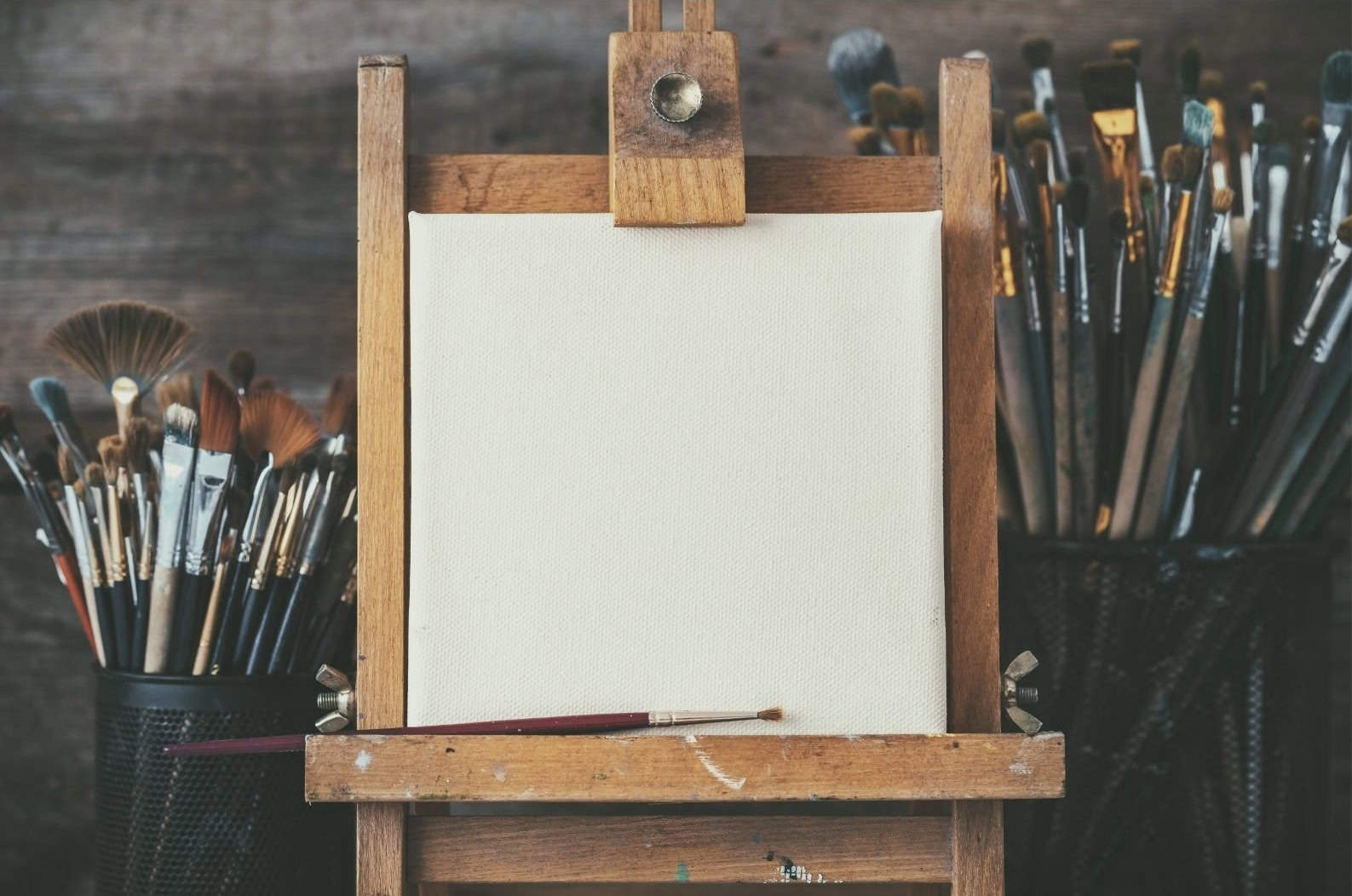If you’re an artist, or just like to dabble in oil or acrylic painting, you will have heard about priming a canvas before starting to paint. But what happens if you don’t?
In this brief article, we’ll explore some of the reasons as to why it is important, and whether it is necessary to prime a canvas before painting.
What Is Canvas Priming?
Canvas priming is the process of applying a base coat to the canvas before painting. This base coat helps to prepare the canvas for paint, making it less absorbent and less likely to buckle or warp under the weight of the paint. It also provides a barrier between the canvas and the paint, which can help to prevent premature deterioration of the canvas.
What Happens If You Don’t Prime A Canvas?
If you don’t prime a canvas before painting, the paint may not adhere as well to the surface and may be more prone to flaking or chipping in the future. The paint may also fade more quickly than if it had been primed.
In addition, an unprimed canvas is more likely to warp or buckle under the weight of the paint. The oil can also sink down into the canvas which can leave patches on the painting.
However, if for any reason you don’t have the time and resources, or simply had forgotten to prime, there are still some ways to salvage the situation.
If you have already started the painting, then you can try painting in layers, making sure you use the fat over lean method. This may help to seal in the existing paint and prevent further flaking. If the paint is already dry, you can try varnishing the painting to help protect it from UV rays and other environmental factors.
While priming a canvas is the best way to ensure a long-lasting, high-quality painting, there are still some ways to salvage a painting that has been done without priming. If you’re experiencing problems with your painting, don’t hesitate to reach out to a professional for advice.
Benefits Of Priming A Canvas Before Painting
There are many benefits of priming a canvas before painting. Priming the canvas helps to:
- Makes the canvas less absorbent
The primer helps to make the canvas less absorbent, which allows the paint to adhere better, and creates a smooth, even surface for painting.
- Prevents the paint from fading
When you prime a canvas before painting, you create a barrier between the canvas and the paint. This helps to prevent the paint from fading or deteriorating prematurely.
- Prevents the canvas from buckling
Priming the canvas also helps to prevent it from buckling or warping under the weight of the paint. This is especially important if you’re using oil-based paints, which are heavier than water-based paints.
- Provides a barrier between the canvas and the paint
The primer also provides a barrier between the canvas and the paint. This helps to prevent premature deterioration of the canvas. It also helps to keep the paint from sinking down into the canvas and leaving patches on the painting.
- Prevents premature deterioration of the canvas
It is also important to prevent a premature deterioration of the canvas, and one of the ways to do this is by priming it, which will make it more durable
- Prevents flaking or chipping of the paint
Priming a canvas helps to prevent the paint from flaking or chipping
So, Is It Necessary To Prime A Canvas Before Painting?
While priming a canvas is not always necessary, it’s still recommended in order to get the best results. If you don’t have time or forget to prime your canvas before painting, there are some ways to salvage the situation. However, if you’re experiencing problems with your painting, don’t hesitate to reach out to a professional for advice.
On another note, a lot of canvases that you find in art stores today are pre-primed. If that is the case, then you don’t need to prime them at all. The label at the front should tell you. If it doesn’t have a label, then a good clue is the colour of the canvas – a bright white can indicate that the canvas been gesso-primed.
Conclusion
In short, priming a canvas before painting is always recommended in order to get the best results. The primer helps to make the canvas less absorbent, which allows the paint to adhere better. This prevents the paint from flaking or chipping and creates a smooth, even surface for painting. When you prime a canvas before painting, you’re also helping to prevent the premature deterioration of the canvas. So, if you’re an artist or just enjoy painting, be sure to prime your canvas before getting started!
On the other hand, many art stores today stock gesso pre-primed canvases. In that case, you can take the worry out of priming completely!
Thanks for reading, and happy painting!
See also…
-
14 Ways To Make Your Watercolour Paintings Look Magical
-
What is the Fat-Over-Lean Rule in Oil Painting
-
The Ultimate Guide To Oil Painting: Rules, Mediums & Varnishes
-
What Is Sansodor Used For In Oil Painting
-
Step-by-Step Watercolour Painting Tutorial: Flower Branch With Blue Butterfly (In Procreate)
-
How To Keep An Oil Painting From Cracking
-
How Many Layers Should An Oil Painting Have
-
Why Are Parts of My Oil Painting Shiny
-
Why Is Oil Painting Done In Layers
-
Do I Need Special Paint Brushes For Oil Painting

